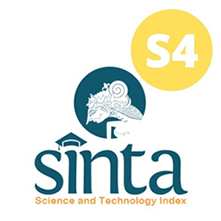High Flow Oxygen Analyzer Design on High Flow Nasal Cannula (HFNC) for Monitoring Oxygen therapy in Adults
Abstract
High Flow Nasal Canulla (HFNC) is a technique that provides a high flow of heated and humidified gas. HFNC is simpler to use and implement than noninvasive ventilation (NIV) and appears to be a good alternative treatment for hypoxemic acute respiratory failure (ARF). This study aims to help facilitate medical personnel or equipment operators in monitoring the flow that enters the patient's body so that oxygen therapy can be given according to the right dose. This study uses an Arduino microcontroller to process the output flow from the Sensirion SFM-3000 flow sensor, then the processed flow value will be displayed on the TFT LCD. The independent variable in this study is the flow setting value, while the dependent variable is the SFM-3000 flow sensor. The largest error flow value is in the setting at 30 LPM with an error value of 2.70%. The flow value is set using a flowmeter, while the comparison tool used is a flow analyzer (Citrex H3). In the testing phase, the measurement value is 10 LPM to 60 LPM with a time of 5 minutes at each point. Based on the measurements that have been made, the largest error value is obtained at the value of 30 LPM, which is 2.70% and the smallest error value is at the value of 60 LPM, which is 0.74%. Data retrieval using a compressor and central oxygen is very influential on the results of the flow and oxygen concentration. The results obtained are more stable than without the use of a compressor and central oxygen.The conclusion from these results is that the calibrator module has a relative error (error value) that is still within the allowable tolerance limit, which is ±5%. And also the design of this tool is portable and low cost and is made to be used in hospital agencies as a support for maintenance on HFNC equipment

This work is licensed under a Creative Commons Attribution-ShareAlike 4.0 International License.
Authors who publish with this journal agree to the following terms:
- Authors retain copyright and grant the journal right of first publication with the work simultaneously licensed under a Creative Commons Attribution License that allows others to share the work with an acknowledgement of the work's authorship and initial publication in this journal.
- Authors are able to enter into separate, additional contractual arrangements for the non-exclusive distribution of the journal's published version of the work (e.g., post it to an institutional repository or publish it in a book), with an acknowledgement of its initial publication in this journal.
- Authors are permitted and encouraged to post their work online (e.g., in institutional repositories or on their website) prior to and during the submission process, as it can lead to productive exchanges, as well as earlier and greater citation of published work (See The Effect of Open Access).











